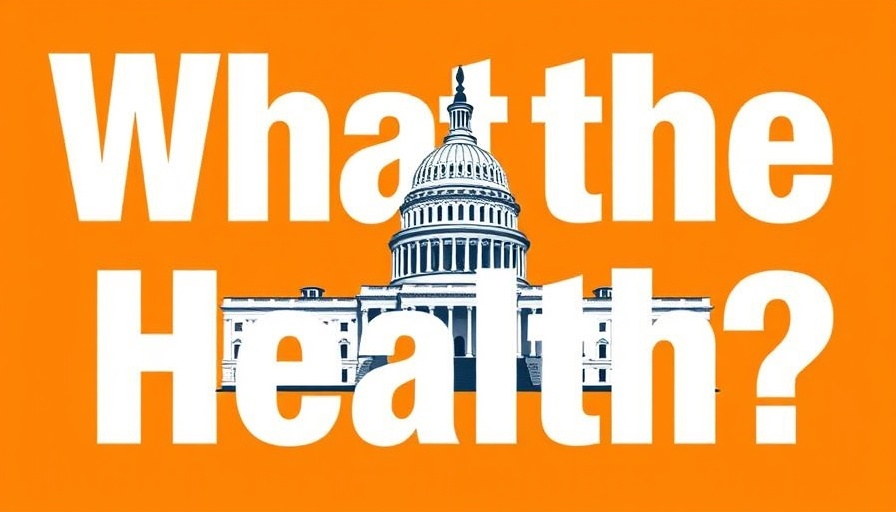
Understanding the Impact of Federal Health Funding Cuts
In a rapidly changing health policy landscape, the implications of federal funding cuts instituted by the second Trump administration loom large over state and local health systems. This nuanced conversation took center stage at the What the Health? podcast's special live episode at the Association of Health Care Journalists' annual meeting on May 30, 2025. Host Julie Rovner was joined by notable panelists, including Rachel Nuzum from The Commonwealth Fund, Berenice Núñez Constant from AltaMed Health Services, and Anish Mahajan from the Los Angeles County Department of Public Health, who elaborated on the effects of these cuts.
The Immediate Effects at State Levels
With budget reductions implemented just months into the new administration, states are already feeling the strain on their healthcare programs. According to Nuzum, the cuts threaten critical services that millions depend upon, placing an already fragile health infrastructure in jeopardy. These federal reductions not only challenge the state budgets but also directly affect vulnerable populations who rely on Medicaid and other support programs.
Looking Beyond Immediate Cuts: Future Predictions
Panelists highlighted that the ramifications of these cuts could extend far beyond the immediate fiscal year. As Congress considers further reductions, a chilling effect on public health initiatives might ensue. Mahajan posited that ongoing budget tensions could lead to public health crises, especially in underserved communities that have recently begun to stabilize after years of struggle. The deterioration of services could foster inequality, particularly in communities of color that already face barriers to adequate healthcare.
Challenging the Status Quo: Counterarguments and Perspectives
While the panel unanimously acknowledged the potential harms caused by the cuts, some participants urged a reevaluation of funding priorities rather than simply opposing the reductions. Instead of viewing these cuts solely as detrimental, advocates like Constant argued for innovative approaches to healthcare funding that generate savings without sacrificing quality. This perspective is crucial, as it encourages dialogues around efficiency and restructuring rather than unilateral pushbacks against current government initiatives.
The Relevance of Current Events on Public Policy
Incorporating insights from the ongoing conversations around healthcare reform, the recent federal funding cuts could play a pivotal role in shaping future narratives. As American citizens increasingly engage with issues like accessible healthcare, policymakers are pressured to address systemic flaws. This urgency may catalyze movements advocating for universal healthcare solutions, especially as voters respond critically to the implications of budget cuts on real people and services.
Actionable Insights for Engaged Citizens
For those concerned about the evolving landscape of healthcare funding, engaging with local advocacy groups becomes imperative. Understanding how federal policies impact community health can enable individuals to join local initiatives geared toward maintaining or restoring services. Community mental health programs, for instance, can provide resources and assistance to those affected by cuts. Being informed is the first step towards action in a system where every voice counts.
Summarizing the Listening Experience
As the discussions of the live podcast reinforced, the intersection of federal policy, state health funding, and community healthcare cannot be overstated. The insights shared by experts starkly outline the potential dark trajectory we could embark upon without vigilant engagement and advocacy from citizens and leaders alike. The host and panelists urged listeners to stay informed, involved, and vocal, ensuring that healthcare remains a priority on the national agenda.
In these times of uncertainty, it is vital for the public to maintain a dialogue with lawmakers, encouraging transparency in healthcare funding and access. The role of citizens has never been more crucial amidst these tumultuous waters of change. It’s time to rise, speak up, and advocate for a system that genuinely serves all.
 Add Row
Add Row  Add
Add 



Write A Comment